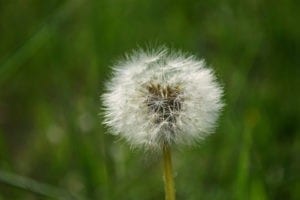Spring Lawn Care Schedule
This spring there are a few key things you should do to care for your lawn so that it thrives throughout the growing season. Now, even though we specialize in caring for trees, we know that trees are only one part of your yard’s flora. Lawn care benefits everything growing in your patch of green: shrubs, flowers, vegetables, and trees. By keeping to a spring lawn care schedule, you’ll be promoting healthy growth for everything on your property. You’ll see your efforts rewarded in lush grass as well as thriving plants.
Early Spring Lawn Care Schedule: apply weed control and organic matter

Early spring can still be wet and cold, but beneath the driving rains and remnants of snow, your lawn is already gearing up for the warm months ahead. After the snows melt, you can ramp up your lawn care schedule.
Now is the time to apply weed control products. Weeds, including crabgrass, will start growing aggressively at the same time as your lawn. Every plant is competing for resources in the early growing season, so applying a weed prevention product is a key part of early spring lawn care.
Instead of fertilizing, apply organic nitrogen or another organic matter product that will nourish your grass during rapid growth in early spring.
Lawns should be seeded in the fall, but if your lawn needs some seeding now, you should considering doing this in the early spring to give your new grass a long growing season.
Mid-Spring Lawn Care Schedule: keep growth in check
As the days grow longer and warmer, your grass draws its energy from the sun and water. Avoid applying traditional fertilizers at this point in the spring. You run the risk of supercharging your lawn—the fertilizer will accelerate growth of lush grass, which can be more susceptible to disease. Consider another application of organic nitrogen or other organic, compost-based fertilizers.
Aeration should be undertaken in mid-spring. In lawn aeration, coring tools punch through the grass to remove plugs of soil and root matter. The plugs are left on the lawn to decompose. This process offers two benefits. First, it opens up the soil to allow it to receive organic matter as nourishment more easily. Second, aeration reduces some of the thatch’s thickness, letting the remaining roots feed more easily.
We caution against overwatering in spring or at any point in the growing season. Overwatering can reduce your growing lawn’s root penetration. Later in the summer, your grass needs to depend on a deep root system to sustain it between rains or watering sessions. Overwatering can contribute to dependence.
Late Spring Lawn Care Schedule: mow and water deeply
Most homeowners have begun a regular mowing schedule by mid- to late spring. Keep mower blades sharp for a clean cut, and avoid cutting grass too short. Aim to keep the mower blade at about 2 ½ inches above the roots, and cut only 1/3 of the grass stem as you mow. Also consider leaving grass clippings—at least some of them—on the lawn. They’re free fertilizer to help your lawn thrive.

Trees do their best in a healthy ecosystem. As a homeowner, you’ll help all your plants look their best and take full advantage of the growing season when you care for your lawn. You’ll also make sure your lawn is the best looking one on the block.
Advanced Tree Care combines top-notch equipment, cutting-edge technology, and well-trained staff to provide emergency tree removal and tree maintenance services. With a presence in nine counties and two states, we work daily to provide unparalleled customer service, safety, and efficiency—as well as the expertise to beautify your landscaping and community. Advanced Tree Care isn’t just our name—it’s also our purpose!